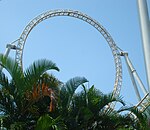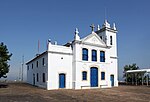Serviço Social do Comércio

Serviço Social do Comércio (Portuguese: Social Service of Commerce), also known by the acronym SESC, is a Brazilian non-profit private institution, kept by businessmen in the trade of goods, services and tourism. It has operations in all Brazil, aimed primarily for the welfare of their employees and family but open to the general community. SESC is part of the Sistema S (S System), a group of institutions created by Brazilian businessmen in the 1940s, such as SESI, SENAI and SENAC. It was created on 13 September 1946, by Decree-Law No. 9,853, issued by president Eurico Gaspar Dutra.SESC operates in the education, health, leisure, culture and medical care areas, and is Brazil's leading institution in arts financing. Its revenue come from a tax on companies that ranges from 0.2% to 2.5%.
Excerpt from the Wikipedia article Serviço Social do Comércio (License: CC BY-SA 3.0, Authors, Images).Serviço Social do Comércio
Avenida Ayrton Senna, Rio de Janeiro Jacarepaguá
Geographical coordinates (GPS) Address Nearby Places Show on map
Geographical coordinates (GPS)
| Latitude | Longitude |
|---|---|
| N -22.963333 ° | E -43.35808 ° |
Address
SESC / SENAC
Avenida Ayrton Senna 5555
22775-004 Rio de Janeiro, Jacarepaguá
Rio de Janeiro, Brazil
Open on Google Maps





